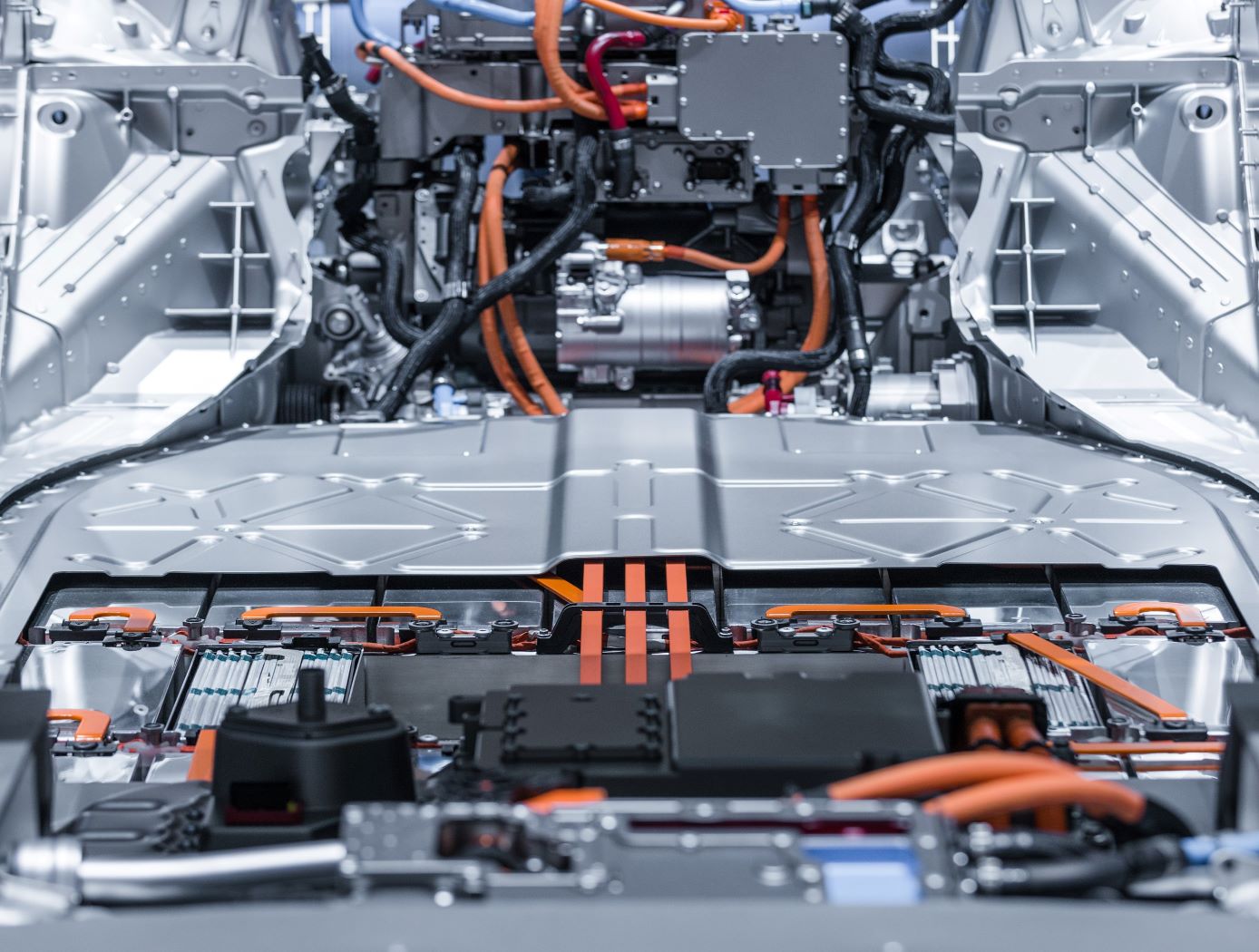Search
Power Generation and Storage

Nail Penetration Adapter for
Li-Ion Battery Testing
NASA’s pneumatic nail penetration trigger system embodies a fast and consistent nail penetration and retraction tool that tests battery cells within various steel and mylar enclosures. It is operated remotely with electric power and shop air pressure inputs. The trigger system is controlled by a solenoid valve and drives a nail to a set distance at 100 m/s for a precise and repeatable penetration injury to a battery cell.
Contributing to the trigger system’s precision and repeatability is the nail penetration adapter that aligns the battery cell test enclosure with the trigger system and guides the nail by its internal barrel. The tip of the adapter threads into a variety of NASA battery cell test enclosures and provides an internal seating stop to ensure a proper targeting depth. On the actuator side of the adapter, two quick-release pins connect the adapter to the actuator mount which is bolted to the actuator subassembly. Removal of these pins readily allow for separation of the nail penetration adapter from the actuator mount and subassembly. During a TR event, the adapter is also designed to prevent flames, sparks, and ejecta from traveling into the actuator subassembly.
While the versatile nail penetration adapter was originally configured to interface with NASA’s Fractional Thermal Runaway Calorimeter (FTRC), a blast plate test platform (BPTP), or cell enclosure for passive propagation resistant (PPR) methods, the adapter could be modified for commercial use with other battery testing systems. Companies interested in this technology may include those seeking to improve the safety of Li-ion battery cells and packs along with vertically integrated companies performing in-house TR tests during development of electrified systems like electric vehicles (EVs), electric vertical takeoff and landing (eVTOLs) vehicles, and electronic spacecraft components.
Power Generation and Storage

Ram-Dent Thermal Runaway Triggering Device
The Ram-Dent Thermal Runaway Triggering Device is capable of trig-gering mild short circuits that are similar to internal defects, and more extreme short circuits that are comparable to those initiated by an implanted internal short circuit device – all without having to modify the battery cell in any way. The device imparts a high velocity, low mass blunt impact onto a small surface area of a Li-ion battery cell can wall allowing a small hemispherical dent to form. This impact deforms and tears the internal separator of the battery cell, causing a short circuit, and induces thermal runaway.
Several methods for initiating TR on demand currently exist, but they have characteristics and biases that make them more unfavorable for certain testing objectives. Heat-based insult in any form requires additional thermal energy to be applied to the battery cell, potentially distorting the signal-to-noise ratio in FTRC measurement, and increas-ing the severity of failure beyond what is intended. This methodology also requires time to heat the battery cell to critical temperature, and it potentially weakens the battery cell can wall causing abnormal kinetics and rupture. Mechanical insult methodologies, such as crush testing and nail penetration, have unique applications but rely on deformation of the battery cell itself which alters the flow characteristics of internal gases and the material integrity of the battery cell.
This technology aims to solve these limitations by implementing a cost-effective method to create a natural short circuit failure in Li-ion batteries that does not alter nominal vent paths and energy yields, potentially yielding the most unbiased calorimeter tallies yet.
The Ram-Dent Thermal Runaway Triggering Device is at a technology readiness level (TRL) 4 (component and/or breadboard validation in laboratory environment) and is now available for patent licensing. Please note that NASA does not manufacture products itself for commercial sale.
Power Generation and Storage

Triggering Li-ion Battery Cells with Laser Radiation
This technology is based upon a 120-watt IR laser is coupled to a fiber optic cable that is routed from the output of the laser into a series of focusing optics which directs energy onto a battery cell mounted to a test stand. When activated, heat from the laser penetrates the metal housing, heating the internals of the cell. At a specific temperature, the separator in the first few layers of the cell melts allowing the anode and cathode to make contact and initiates an internal short circuit. The internal short circuit then propagates throughout the battery eventually causing thermal runaway. The lower the wavelength of the laser used to produce the thermal runaway, the more heat-energy will be absorbed into the cell producing a faster result. The fiber optic cable can be terminated into a series of optics to focus the laser at a specific target, or the fiber optic cable can be stripped bare and placed next to the target to heat an isolated location. This method can also be used on a wide variety of cells, including Li-ion pouch cells, Li-ion cylindrical cells and Li-ion Large format cells.
The innovation Triggering Li-ion Cells with Laser Radiation is at TRL 6 (which means a system/subsystem prototype has been demonstrated in a relevant environment) and the related patent application is now available to license and develop into a commercial product. Please note that NASA does not manufacture products itself for commercial sale.



